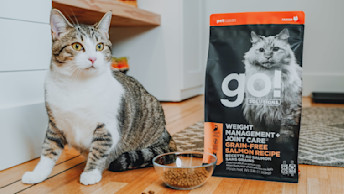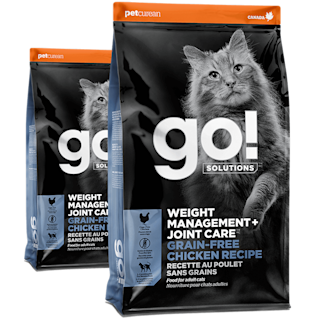February 20, 2025
Body Condition Score for Cats: What is a Healthy Weight?

Knowing your cat's body condition score (BCS) is an essential part of keeping them happy and healthy. This simple scoring system helps pet parents assess whether their feline friend is underweight, overweight, or just right. Pairing this guide with the chart below, you’ll have all the tools you need to confidently evaluate your cat’s condition.
What Is a Body Condition Score for Cats?
The BCS is a scale, ranging from 1 to 5, that evaluates a cat's body fat and muscle mass. A score of 1 indicates a cat that is extremely underweight, while a 5 reflects a cat that is obese. A healthy cat would be represented by a 3 on this scale. This score is more than just a number—it’s a snapshot of your cat’s overall health.
What is a Healthy Weight for a Cat?
Healthy weight varies depending on your cat's breed, age, and activity level. For example:
Smaller breeds like Siamese typically weigh between 5–8 pounds2.
Larger breeds like Maine Coons can range from 8–20 pounds1.
Rather than focusing solely on the scale, use the BCS to visually and physically assess your cat.
Assessing Your Cat’s Body Condition Score
To score your cat, observe and feel their body and compare them to the illustrations in the chart.

Why Maintaining a Healthy Weight Matters
An ideal body condition isn’t just about looks—it’s about your cat’s long-term health. Obesity can lead to secondary health conditions like diabetes, arthritis, and heart problems, while being underweight may indicate underlying health concerns. Regularly monitoring your cat’s BCS may help you catch potential problems early.
Tips for Supporting a Healthy Weight
Adjust Diet: Ensure your cat’s food matches their life stage and activity level. Portion control is key! Use feeding guidelines as a starting point and increase or decrease the amount you feed your pet depending on their needs. We also recommend using a kitchen scale for accuracy.
Encourage Activity: Interactive toys and climbing structures can keep your cat moving.
Regular Vet Checkups: A vet can help you set goals and monitor progress if your cat needs to gain or lose weight.
With our chart, you’ll have a visual reference to complement this guide. Take a moment to evaluate your cat today—it’s a small step toward a longer, healthier life together.

Recommended Solution
Weight Management Cat Food Solutions
Keeping your cat in great shape is key to a lifetime of playtime and purrs. With tasty lean proteins and functional ingredients like L-carnitine for fat burning.
View Weight Management + Joint Care cat food
Maine Coon. VCA Animal Hospitals. Accessed January 20, 2025. https://vcacanada.com/know-your-pet/cat-breeds/maine-coon.
Siamese. VCA Animal Hospitals. Accessed January 20, 2025. https://vcacanada.com/know-your-pet/cat-breeds/siamese.


